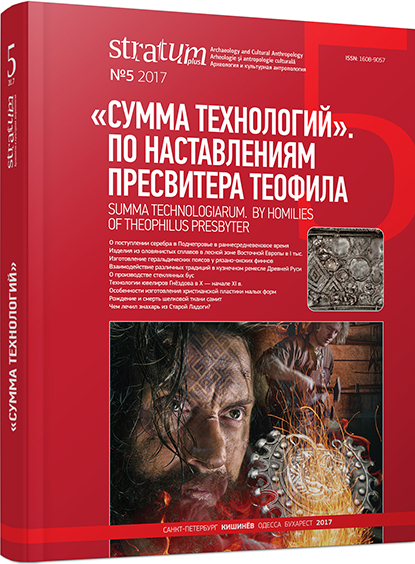О распространении изделий из оловянистых сплавов в лесной зоне Восточной Европы в середине — второй половине I тыс. н. э.
On the Dissemination of the Pewter Ornaments in the Forest Zone of Eastern Europe in the Middle — the Second Half of the 1 Thousand AD
Author(s): Elena R. MikhailovaSubject(s): History, Archaeology, Middle Ages
Published by: Издательский дом Stratum, Университет «Высшая антропологическая школа»
Keywords: Eastern Europe; Early Middle Ages; Hunnic period; appliqués; plaques; tin; lead-tin alloy (pewter); casting moulds; influence; imitation
Summary/Abstract: Ornaments of tin and its alloys are present in antiquities of the forest belt of Eastern Europe from the first centuries AD; they often represent cheap imitations of the more expensive metal objects and reproduce them in form. In the middle and the second half of the 1st millennium AD miniature cast pewter geometric appliqués, often with ribbed edge, were widely distributed in forest and forest-steppe zone. According to the author, the spread of this group of pewter geometric appliqués was caused by imitation (perhaps indirect) of rich “princely” clothing of the Hunnic period, embroidered with small plaques of thin gold plates. Echoes of ideas about the status clothes penetrate from the far south into the forest zone and trigger here the production of similar low-cost appliqués, based on the traditional technology. A possible intermediary between the “princely” gold and cheap tin could be silver ornaments of the same types, but they have yet to be identified.
Journal: Stratum plus. Археология и культурная антропология
- Issue Year: 2017
- Issue No: 5
- Page Range: 87-97
- Page Count: 11
- Language: Russian
- Content File-PDF

